Light and color: the basics of the basics
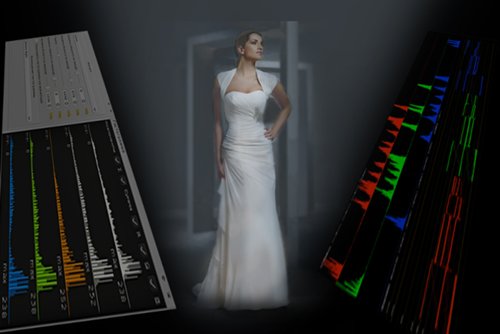
We often speak of such a concept as light, sources of illumination, color of images and objects, but we do not quite well imagine what light is and what color is. It's time to deal with these issues and move from submission to understand.
We are surrounded
Whether we are aware of this or not, we are in constant interaction with the outside world and accept the impact of various factors of this world. We see the space around us, constantly hear sounds from various sources, feel warmth and cold, do not notice that we are under the influence of natural background radiation, and are constantly in the radiation zone, which comes from a huge number of sources of telemetry, radio and telecommunications. Almost everything around us emits electromagnetic radiation. Electromagnetic radiation is electromagnetic waves created by various radiating objects - charged particles, atoms, molecules. Waves are characterized by repetition rate, long, intensity, and a number of other characteristics. Here you are just an introductory example. The heat emanating from a burning fire is an electromagnetic wave, more precisely, infrared radiation, and we do not see it at a very high intensity, but we can feel it. The doctors took an X-ray photograph — they were irradiated with electromagnetic waves, which possess high penetrating power, but we did not feel these waves and did not see them. The fact that the electric current and all the devices that work under its action are sources of electromagnetic radiation, you all, of course, know. But in this article I will not tell you the theory of electromagnetic radiation and its physical nature; I will try to explain in less simple language what visible light is and how the color of objects that we see appears. I started talking about electromagnetic waves to tell you the most important thing: Light is an electromagnetic wave that is emitted by a heated or excited substance. In the role of such a substance can make the sun, incandescent lamp, LED flashlight, a flame of a fire, various chemical reactions. Examples can be quite a lot, you yourself can bring them in a much larger number than I wrote. It is necessary to clarify that by the concept of light we will mean visible light. All of the above can be represented as such a picture (Figure 1).
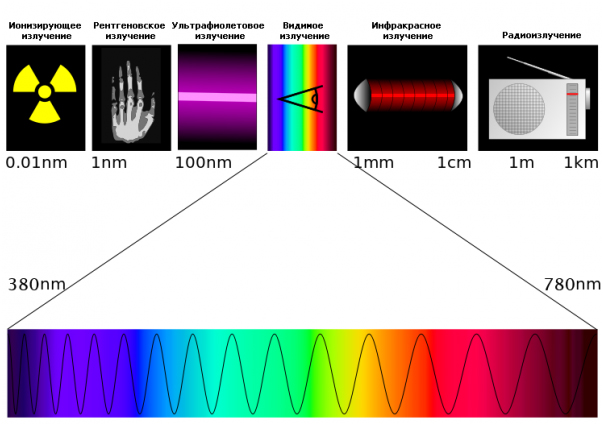
')
Figure 1 - Place of visible radiation among other types of electromagnetic radiation.
In Figure 1, the visible radiation is presented in the form of a scale, which consists of a "mixture" of different colors. As you may have guessed, this is a spectrum . Through the entire spectrum (from left to right) passes a wavy line (sinusoidal curve) - this is an electromagnetic wave, which displays the essence of light as electromagnetic radiation. Roughly speaking, any radiation is a wave. X-ray, ionizing, radio emission (radio receivers, television communication) is not important, all of them are electromagnetic waves, only each type of radiation has a different length of these waves. A sinusoidal curve is just a graphical representation of the radiated energy that changes over time. This is a mathematical description of the radiated energy. In Figure 1, you can also see that the depicted wave is a bit compressed in the left corner and extended in the right. This suggests that it has different lengths at different sites. The wavelength is the distance between its two adjacent vertices. Visible radiation (visible light) has a wavelength that varies from 380 to 780nm (nanometers). Visible light is just a link of one very long electromagnetic wave.
From light to color and back
You know from school that if you put a glass prism in the path of a ray of sunlight, then most of the light will pass through the glass and you will be able to see colored stripes on the other side of the prism. That is, the original sunshine was a white beam, and after passing through a prism it split into 7 new colors. This suggests that white light consists of these seven colors. Remember, I just said that visible light (visible radiation) is an electromagnetic wave, and so, those multicolored stripes that came out after passing a sunbeam through a prism are separate electromagnetic waves. That is, 7 new electromagnetic waves are obtained. We look at Figure 2.

Figure 2 - The passage of a ray of sunlight through a prism.
Each wave has its own length. You see, the tops of neighboring waves do not coincide with each other: because the red color (red wave) has a length of about 625-740nm, the orange color (orange wave) is about 590-625nm, the blue color (blue wave) is 435-500nm., I will not give figures for the remaining 4 waves, the essence, I think, you understand. Each wave is radiated light energy, that is, a red wave emits red light, orange - orange, green - green, etc. When all seven waves are emitted simultaneously, we see a spectrum of colors. If mathematically put the graphs of these waves together, then we get the original graph of the electromagnetic wave of visible light - we get white light. Thus, it can be said that the spectrum of an electromagnetic wave of visible light is the sum of waves of different lengths, which, when superimposed on each other, give the original electromagnetic wave. The spectrum "shows what the wave consists of." Well, if you just say, the spectrum of visible light is a mixture of colors that make up the white light (color). It must be said that other types of electromagnetic radiation (ionizing, X-ray, infrared, ultraviolet, etc.) also have their own spectra.
Any radiation can be represented as a spectrum, although there will be no such colored lines in its composition, because a person is not able to see other types of radiation. Visible radiation is the only type of radiation that a person can see, which is why this radiation is called visible. However, the energy of a certain wavelength itself does not have any color. Human perception of electromagnetic radiation in the visible range of the spectrum is due to the fact that receptors capable of responding to this radiation are located in the human retina.
But is it only by adding the seven primary colors that we can get white? By no means. As a result of scientific research and practical experiments, it was found that all the colors that the human eye is able to perceive can be obtained by mixing only three primary colors. Three primary colors: red, green, blue. If by blending these three colors you can get almost any color, then you can get white color too! Look at the spectrum that was shown in Figure 2, the spectrum clearly shows the three colors: red, green and blue. It is these colors that underlie the RGB (Red Green Blue) color model.
Let's check how it works in practice. Take 3 light sources (spotlights) - red, green and blue. Each of these projectors emits only one electromagnetic wave of a certain length. Red corresponds to the emission of an electromagnetic wave approximately 625-740nm in length (the spectrum of the beam consists only of red), blue emits a wavelength of 435-500nm (the spectrum of the beam consists only of blue), green - 500-565nm (in the spectrum of the beam only green ). Three different waves and nothing else, there is no multi-colored spectrum and additional colors. Now we will direct the searchlights so that their rays partially overlap each other, as shown in Figure 3.

Figure 3 - The result of the imposition of red, green and blue.
Look, at the intersection of the light rays with each other, new light rays have formed - new colors. Green and red formed yellow, green and blue — cyan, blue and red — purple. Thus, by changing the brightness of the light rays and combining colors, you can get a large variety of color tones and shades of color. Pay attention to the center of the intersection of green, red and blue colors: in the center you will see white. The one about which we spoke recently. White is the sum of all colors. It is the “strongest color” of all the colors we see. The opposite of white is black. Black is the complete absence of light at all. That is, where there is no light - there is darkness, there everything becomes black. An example of this is Figure 4.


Figure 4 - Lack of light radiation
I somehow quietly move from the concept of light to the concept of color and do not say anything to you. It is time to clarify. We have found out that light is the radiation that is emitted by a heated body or an excited substance. The main parameters of the light source are the wavelength and luminous intensity. Color is a qualitative characteristic of this radiation, which is determined on the basis of the resulting visual sensation. Of course, the perception of color depends on the person, his physical and psychological state. But we will assume that you feel well enough, read this article and can distinguish 7 colors of the rainbow from each other. I note that at the moment, we are talking about the color of the light radiation, and not about the color of objects. Figure 5 shows the color and light parameters that are dependent on each other.

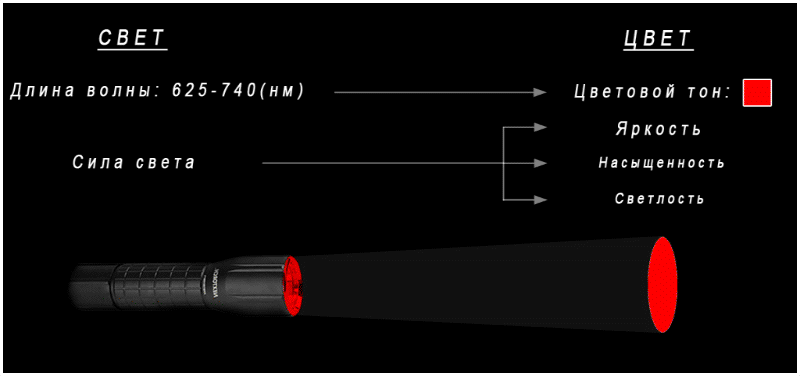
Figures 5 and 6 - Dependence of color parameters on the radiation source
There are basic color characteristics: hue, brightness (Brightness), lightness (Lightness), saturation (Saturation).
Hue

- This is the main characteristic of color, which determines its position in the spectrum. Remember our 7 colors of the rainbow - in other words, 7 color tones. Red color tone, orange color tone, green color tone, blue, etc. There may be quite a lot of color tones, I just cited 7 colors of the rainbow as an example. It should be noted that colors such as gray, white, black, as well as shades of these colors do not refer to the concept of color tone, as they are the result of mixing different color tones.

Brightness

- A characteristic that shows how strongly the light energy of a particular color tone is emitted (red, yellow, violet, etc.). And if it does not radiate at all? If it does not radiate, then it is not there, and there is no energy — there is no light, and where there is no light, there is black color. Any color with a maximum decrease in brightness becomes black. For example, the dimming chain is red: red - scarlet - burgundy - brown - black. The maximum increase in brightness, for example, the same red color will give "maximum red color."
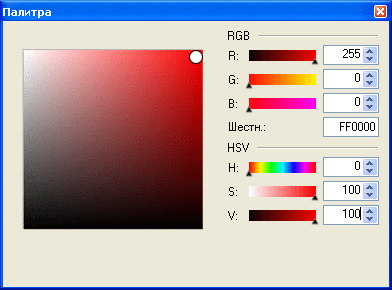
Lightness

- The degree of proximity of color (color tone) to white. Any color with a maximum increase of brightness becomes white. For example: red - crimson - pink - pale pink - white.
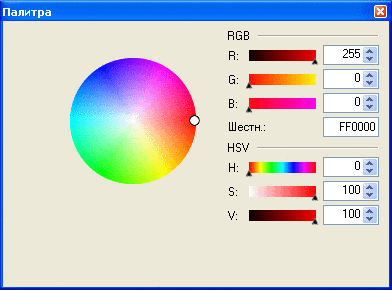
Saturation

- The degree of proximity of color to gray. Gray is the intermediate color between white and black. Gray color is formed by mixing in equal quantities of red, green, blue with a decrease in the brightness of radiation sources by 50%. Saturation varies disproportionately, that is, lowering saturation to a minimum does not mean that the brightness of the source will be reduced to 50%. If the color is already darker than gray, with a decrease in the saturation, it will become even darker, and with a further decrease, it will become completely black.
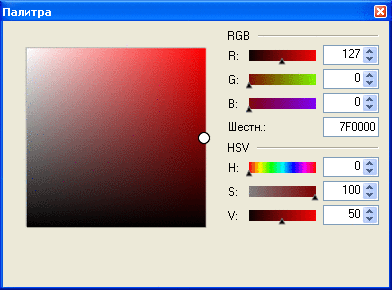
Color characteristics such as hue, brightness (brightness), and saturation (saturation) underlie the HSB color model (also called HCV).
In order to understand these characteristics of color, consider in Figure 7 the color palette of the graphic editor Adobe Photoshop.

Figure 7 - Adobe Photoshop Color Picker
If you look closely at the picture, you will find a small circle, which is located in the upper right corner of the palette. This circle shows which color is selected on the color palette, in our case it is red. Let's start to understand. First, look at the numbers and letters that are located in the right half of the picture. These are the parameters of the HSB color model. The topmost letter is H (hue, color tone). It determines the position of the color in the spectrum. A value of 0 degrees means that this is the highest (or lowest) point of the color wheel — that is, it is red. The circle is divided into 360 degrees, i.e. it turns out that it has 360 color tones. The next letter is S (saturation, saturation). We have indicated a value of 100% - this means that the color will be “pressed” to the right edge of the color palette and has the highest possible saturation. Then comes the letter B (brightness, brightness) - it shows how high the point is on the color palette and characterizes the intensity of the color. A value of 100% means that the intensity of the color is maximum and the point is “pressed” to the upper edge of the palette. The letters R (red), G (green), B (blue) are the three color channels (red, green, blue) of the RGB model. Each of them contains a number that indicates the amount of color in the channel. Recall the example of the spotlights in Figure 3, then we found out that any color can be obtained by mixing the three light rays. By recording numerical data in each of the channels, we uniquely determine the color. In our case, the 8-bit channel and the numbers are in the range from 0 to 255. The numbers in the R, G, B channels show the light intensity (color brightness). Our channel R has a value of 255, which means that it is pure red and has maximum brightness. Channels G and B are zeros, which means the complete absence of green and blue colors. In the lowest column you can see the code combination # ff0000 - this is the color code. Any color in the palette has its own hexadecimal code that defines the color. There is a wonderful article Theory of color in numbers , in which the author tells how to determine color using hexadecimal code.
In the picture you can also see strikethrough numerical fields with the letters “lab” and “CMYK”. These are 2 color spaces, which can also be characterized by colors, there is generally a separate conversation about them, and at this stage there is no need to go into them until you understand RGB.
You can open the Adobe Photoshop color palette and experiment with the meaning of colors in the RGB and HSB fields. You will notice that a change in the numerical values in the R, G, and B channels causes a change in the numerical values in the H, S, B channels.
Object color
It's time to talk about how it turns out that the objects around us take on their color, and why it changes with different lighting of these objects.
The object can be seen only if it reflects or transmits light. If the object almost completely absorbs the incident light, then the object takes on a black color . And when an object reflects almost all of the incident light, it takes on a white color . Thus, you can immediately conclude that the color of the object will be determined by the amount of absorbed and reflected light by which this object is illuminated. The ability to reflect and absorb light is determined by the molecular structure of the substance, in other words, the physical properties of the object. The color of the item "not laid in it by nature"! From the nature of it laid physical properties: reflect and absorb.
The color of the object and the color of the radiation source are inextricably linked, and this relationship is described by three conditions.
- The first condition: The color of the object can only take in the presence of a light source. If there is no light, there will be no color! The red paint in the can will look black. In the dark room we do not see and do not distinguish colors, because they are not. There will be black color of the whole surrounding space and objects located in it.
- The second condition: The color of the object depends on the color of the light source. If the light source is red, then all objects illuminated with this light will have only red, black and gray colors.
- And finally, the Third condition: The color of an object depends on the molecular structure of the substance of which the object consists.
Green grass looks green to us because when it is illuminated with white light, it absorbs the red and blue waves of the spectrum and reflects the green waves (Figure 8).
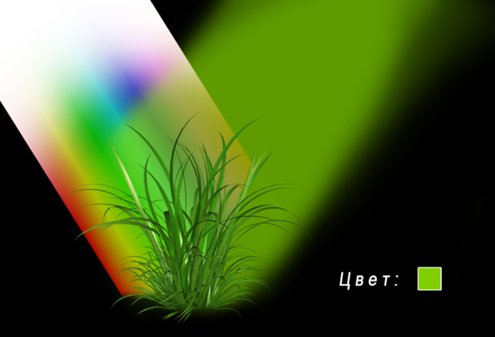
Figure 8 - Reflection of the green wave spectrum
The bananas in Figure 9 look yellow because they reflect waves lying in the yellow region of the spectrum (the yellow wave of the spectrum) and absorb all the other waves of the spectrum.

Figure 9 - Reflection of the yellow wave of the spectrum
The dog, as shown in Figure 10, is white. White color - the result of the reflection of all the waves of the spectrum.

Figure 10 - Reflection of all waves of the spectrum
The color of the object is the color of the reflected wave of the spectrum. This is how objects acquire the color that we see.
The next article will discuss a new color feature - color temperature .
Source: https://habr.com/ru/post/202966/
All Articles